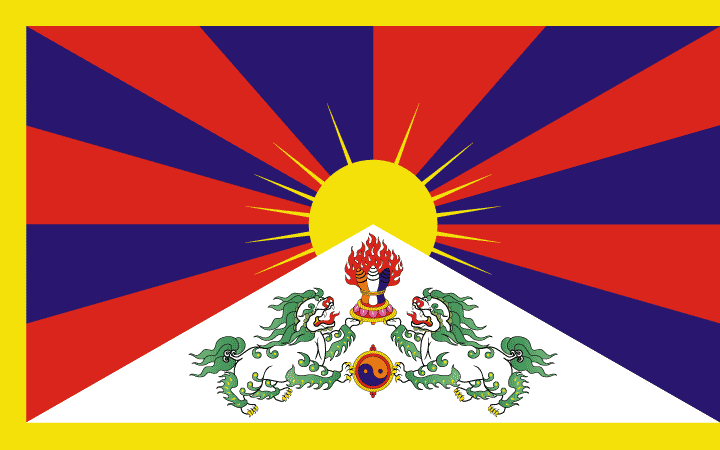Tibet 1916-1951
Although strictly forbidden to be displayed in Chinese-occupied Tibet, a slightly modernised version of the Tibetan flag, dating from 1916, continues to be used by the Central Tibetan Administration (the Tibetan government-in-exile based in Dharamshala, India) and by pro-Tibet groups all over the world to show support for human rights in Tibet and Tibetan independence. The flag depicts two Snow Lions, representing Tibet’s victorious accomplishment of a unified spiritual and secular life. They stand beneath a flaming blue, white and orange jewel, representing the three “supreme gems”, the objects of refuge: Buddha, Dharma and Sangha. They hold between them a blue and orange “taijitu”, a swirling jewel, representing the people’s guarding and cherishing of the self-discipline of correct ethical behaviour. Behind them is a white snow-clad mountain, with a gold sun rising over it, representing the equal enjoyment of freedom, spiritual and material happiness and prosperity by all beings in Tibet. Six red rays emanate from the sun on a blue sky, representing the original ancestors of the Tibetan people: the six tribes called Se, Mu, Dong, Tong, Dru, and Ra. A gold border around the upper, lower, and hoist sides of the flag symbolises that the teachings of the Buddha are flourishing and spreading.
Click or tap here:






